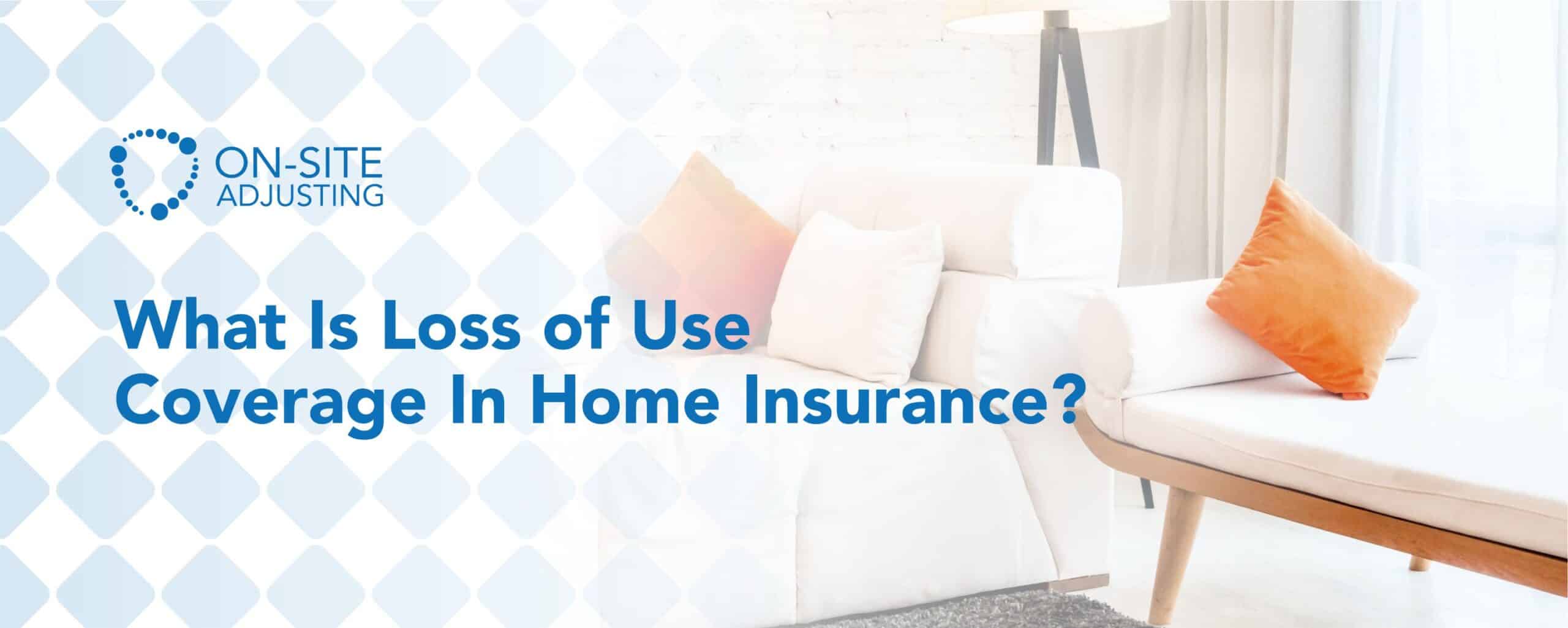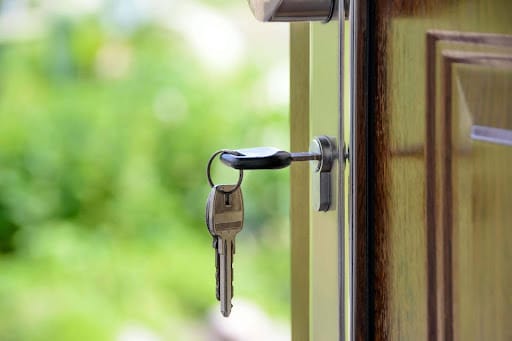
Picture your home in its entirety; your living room, bedroom, and even your kitchen. Imagine a hurricane sweeps everything away. You are emotionally devastated but you also need to quickly pay for a new place to stay. Loss of use coverage protects you from this nightmare. And our blog article explains exactly how.
To fully maximize the benefits of your home insurance policy, hire a public adjuster for some guidance. Public adjusters can handle all aspects of your insurance claim on your behalf. This helps you get stress-free claims.
What Is Loss of Use Coverage?

Loss of use coverage is the financial assistance your insurer provides when your home becomes uninhabitable. It is also popularly known as Coverage D. Most basic homeowner’s insurance policies have this coverage. You can also find this coverage in renter’s policies and condo policies. This coverage lasts until your home is repaired or rebuilt.
Your loss of use coverage only activates after a covered peril destroys or damages your home. For example, many property insurance policies do not cover floods. This is because floods require a separate insurance policy. Therefore, if a flood renders your home uninhabitable, your regular policy might not offer loss of use coverage.
What Does Loss of Use Coverage Cover?
The point of loss of use coverage is to help you maintain a sense of normalcy after losing your home. Therefore, it usually covers reasonable living expenses such as temporary housing and meals. This helps you maintain your usual standard of living until you get your home back.
Loss of use coverage has three main forms of coverage which are:
Additional Living Expenses
This covers all living expenses while you are living outside your home up to your coverage limit. Therefore, temporary housing such as hotels, motels, or Airbnb will be covered. Your policy also covers meals, utilities in your temporary home, and miscellaneous fees such as laundry. If you need to move your personal items to storage for a while, your policy will likely cover this as well.
However, it covers the difference between your usual expenditure and your current expenditure now that you are temporarily living elsewhere. For instance, imagine you usually spend $50 on transportation to work daily. But that went up to $80 because you are in temporary housing far from your workplace. Your insurer will pay the $30 difference.
Fair Rental Value
This aspect of loss of use coverage is particularly useful for landlords. Fair rental value reimburses you for loss of rental income. For example, let’s assume you rent your home out for $2,500 a month. A windstorm then tears off your roof, making your home unlivable. You can’t rent out your home in that condition and this means you are losing money. The fair rental value part of your loss of use coverage will reimburse the $2,500 you would have made. However, this only lasts until you can replace your roof.

Prohibited Use
Loss of use coverage is not limited to instances of your home suffering damage. It extends to not being able to access your home. For example, the government may prevent you from accessing your home because an earthquake damaged surrounding homes. Even if your home is fine, as long as you are prevented from accessing it, your loss of use coverage will kick in.
What Is Excluded Under Loss of Use Coverage?
Loss of use coverage has specific exclusions just like all other forms of insurance coverage. Your coverage only covers extra costs associated with living outside your home. Therefore, it won’t cover the following:
Home Improvements
Loss of use coverage will not pay for any upgrades or home improvements you choose to do. For example, if you need to vacate your home because you are repainting, your insurance policy will not cover that.
On-Going or Routine Payments
Your coverage does not extend to payments you were responsible for before your home became uninhabitable. Loss of use coverage will not cover premiums, mortgage payments, utility bills, or loan repayments.
Luxury Expenses
Your insurance policy will only cover basic living expenses. It won’t cover any luxury items or services. For example, if your damaged home was a two-bedroom apartment, your policy will not pay for a penthouse as temporary housing. Your covered expenses must be basic and ordinary expenses.
How Much Loss of Use Coverage Do I Need?
Typically, your loss of use coverage limit is between 20 to 30% of your total dwelling coverage. For example, let’s say your dwelling coverage is $200,000. 20% of $200,000 is $40,000. Therefore, your loss of use coverage would be $40,000. However, some insurers allow you to increase or reduce this figure.
You should examine your monthly and weekly expenses before adjusting your loss of use coverage. If you have a large family, you will inevitably spend more, and this means you and your family will benefit from a higher loss of use coverage. Additionally, take stock of any extra or added expenses you have. For example, pet expenses or dietary requirements.
When you are ready to alter your current loss of use coverage, discuss it with your insurer. They will explain the process and implications to you.
How To File A Loss of Use Coverage Claim

Here are the steps to follow when filing a loss of use coverage claim:
Save All Relevant Receipts
You will likely need to pay for living expenses out of pocket before your claim is approved. Ensure you keep all receipts for a smooth claims process. This includes the receipts for small bills such as transportation and increased cell phone bills.
The ink used for receipts can fade after some time, therefore, you should scan and save them to your phone. You can then upload this digital version to the cloud or a drive that you can access on any device.
Reach Out To Your Insurance Provider
You need to formally file an insurance claim before the claims process can begin and you can receive reimbursement for relevant expenses. Every insurance company has a different claims process. Therefore, it is best to reach out to your insurer immediately after your house suffers damage. They will put you through their claims process.
Fill Out The Claims Form
Many insurance companies now allow you to fill out claims forms online. You should be able to access this on their website. Sometimes, you can start this claims process over the phone or in person if that is convenient.
Hire A Public Adjuster
Public adjusters are a policyholder’s advocate during the claims process. When you involve them in your claims process, you are reducing the chances of ending up with a denied claim. Additionally, a public adjuster will ensure you access every additional benefit in your insurance policy. This guarantees a hitch-free claims process.
Record Your Usual Living Expenses
It is best to have a document outlining your ordinary living expenses. This can help the insurer see the difference that they need to reimburse you. You should include proof of grocery bills, transportation or gas costs, laundry services, and utilities.
Attach Supporting Documentation
You can submit certain documentation as evidence of your claim. Doing this helps to strengthen your claim and prevents the insurer from doubting your claim’s validity. Ensure you include all the receipts of the additional expenses you incurred. Furthermore, attach proof of your ordinary living expenses for a faster claims process.
Create A Checklist
Having a checklist of all your insurer’s requirements and documentation can keep you organized in an emotionally charged situation. This also ensures that you do not miss any important information.
Follow Up With Your Claim
Do not file claims and abandon them. Ensure you or your public adjuster constantly communicate with the insurer. Ask for updates, issues, or any additional required documentation. This will help you avoid a stuck or stagnant claim.
Conclusion
Insurance helps you prepare for unforeseen circumstances and loss of use coverage can keep you warm if you lose your home. It is key to examine your policy to understand your coverage limits. This helps you plan and budget better.
Additionally, you should know what your loss of use coverage will cover and what it excludes. This knowledge prevents you from being stranded or from filing claims that will be denied.
Public adjusters expedite and ease your claim. They are your best bet to avoiding denied or stale claims. On-Site Adjusting has an experienced team of public adjusters. Send us a message today and maximize your insurance claim.












